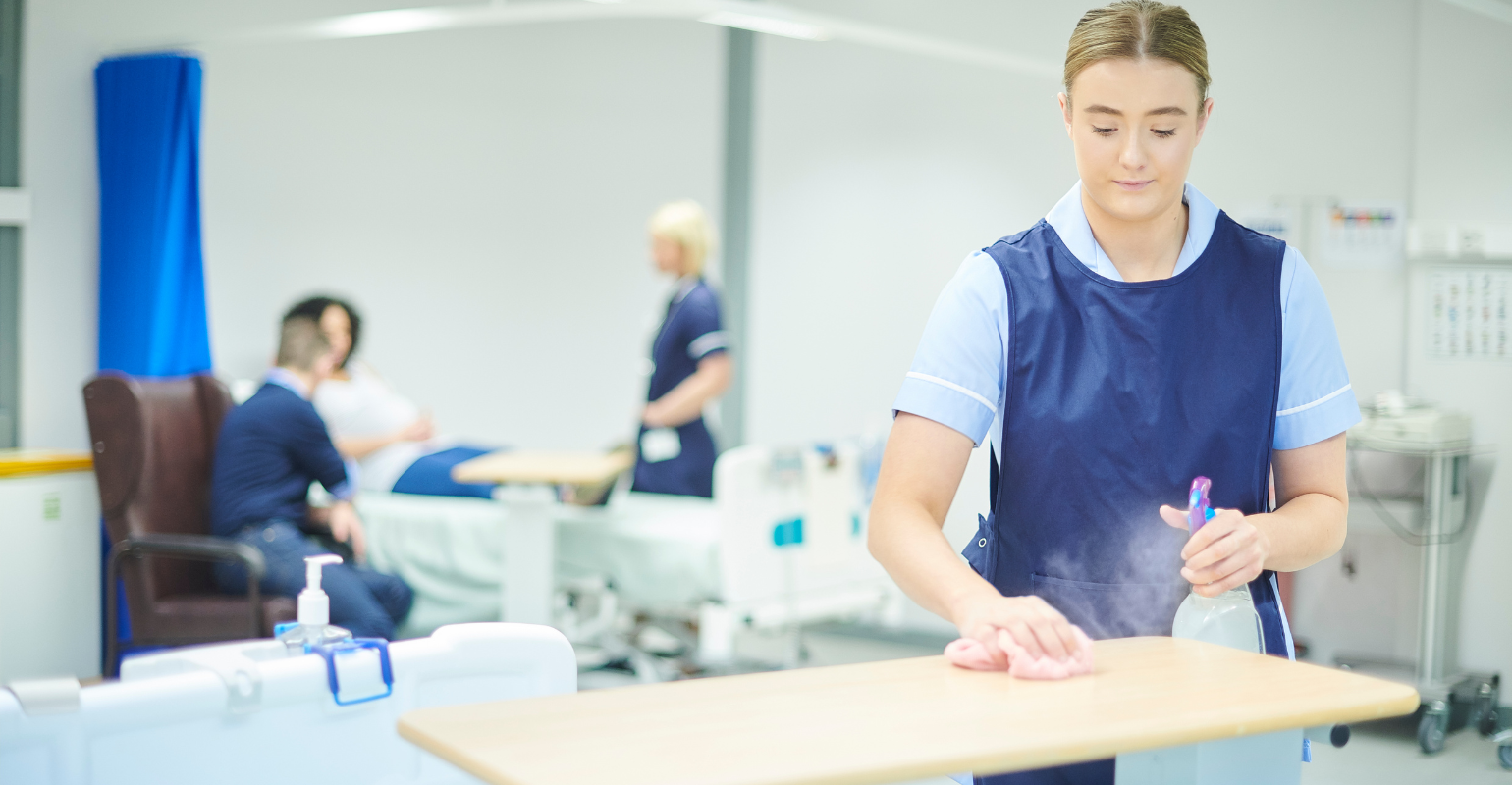
An essential component of infection control in a hospital setting is environmental cleaning (EC). In patient rooms, porous and nonporous surfaces like mattresses and bed rails are susceptible to bacterial contamination caused by dangerous pathogens like clostridium difficile and antibiotic-resistant organisms such as methicillin-resistant Staphylococcus aureus (MRSA), vancomycin-resistant enterococci (VRE), and various species of acinetobacter. Permanent structures such as floors and fixtures are also at risk.
Cleaning, disinfecting, and monitoring procedures used in a healthcare setting are collectively called “environmental cleaning”.
Cleaning these surfaces properly is a crucial component of healthcare providers’ larger plan to lower the incidence of healthcare-associated infections (HAIs). However, there is limited agreement over the best methods for EC. The physical cleaning of surfaces and using a disinfectant are both essential for lowering the surface microbiological load.
The spread of infections should be contained within hospital spaces and expand to all environments. To improve public health, a study conducted by the Mohammed Bin Rashid University of Medicine and Health Sciences (MBRU), in partnership with the Dubai Police and Bond University in Queensland, demonstrated the importance of including mobile phone and smartwatch sanitisation in infection control protocols around the world.
“Our phones are never far from our sides; we take them everywhere. We need to regularly clean our mobile phones and smartwatches as much as we do our own hands,” explained Professor Abiola Senok, Chair of Basic Medical Sciences and Professor of Microbiology and Infectious Diseases at MBRU’s College of Medicine.
Inanimate objects tend to host nosocomial infections for a long time. For instance, gram-positive bacteria can survive for several weeks to months on dry surfaces. It has also been demonstrated that C. difficile spores can live in the environment for up to five months.
Researchers from the MBRU and the Dubai Police also looked at microbiological contamination on smart gadgets in an emergency care unit. Using next-generation metagenomics sequencing technology, samples from mobile phones, smartwatches, and healthcare workers' hands were examined to help researchers determine which microorganisms are polluting these gadgets.
“Our research findings showed that organisms identified from the hands of healthcare workers were also detected on their mobile phones and smartwatches,” commented Lieutenant Colonel Dr. Rashed Alghafri, Director of the International Center for Forensic Sciences in the General Department of Forensic Evidence and Criminology at Dubai Police.




